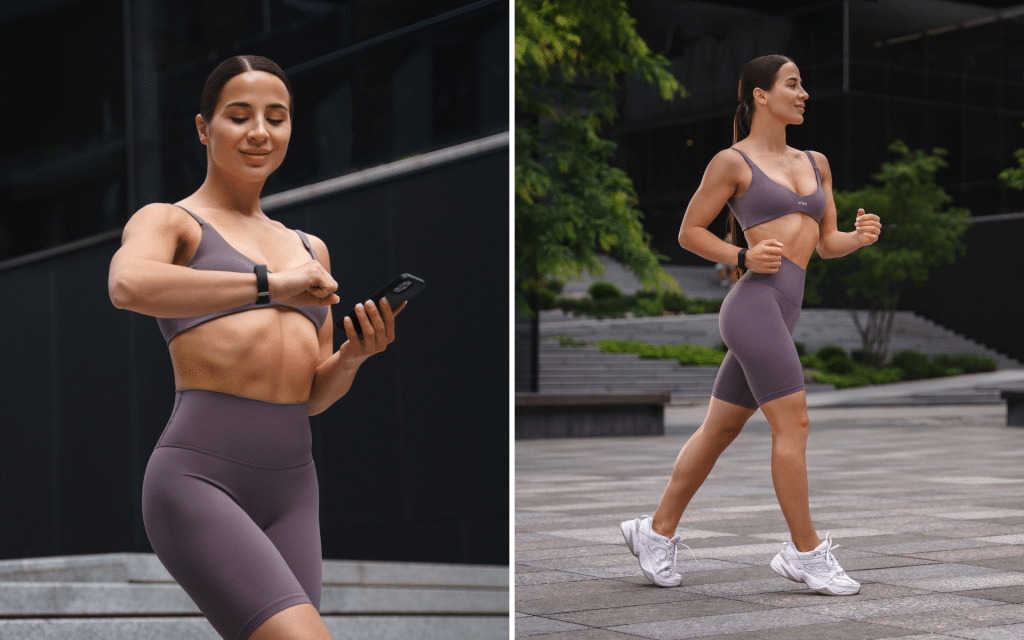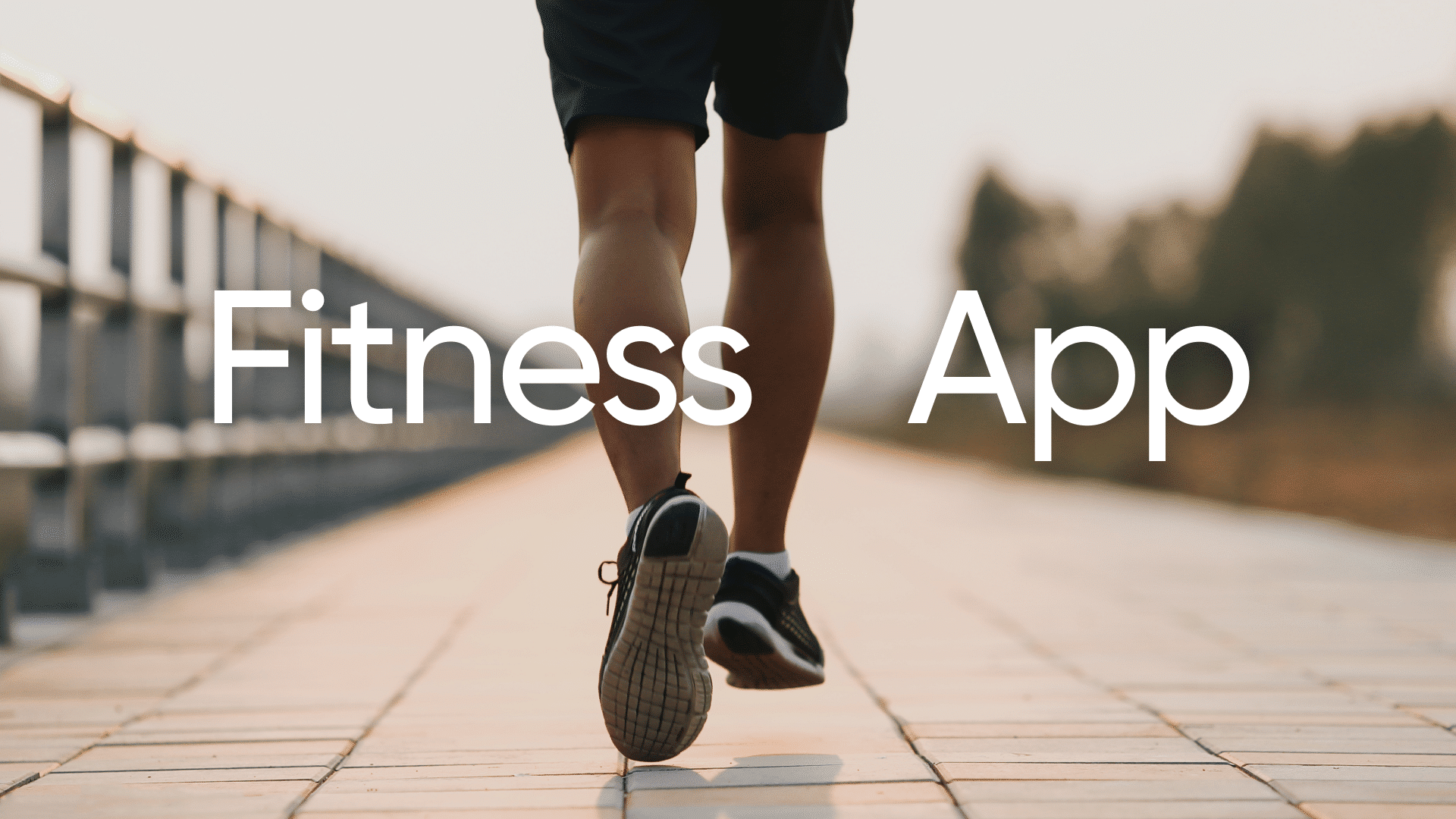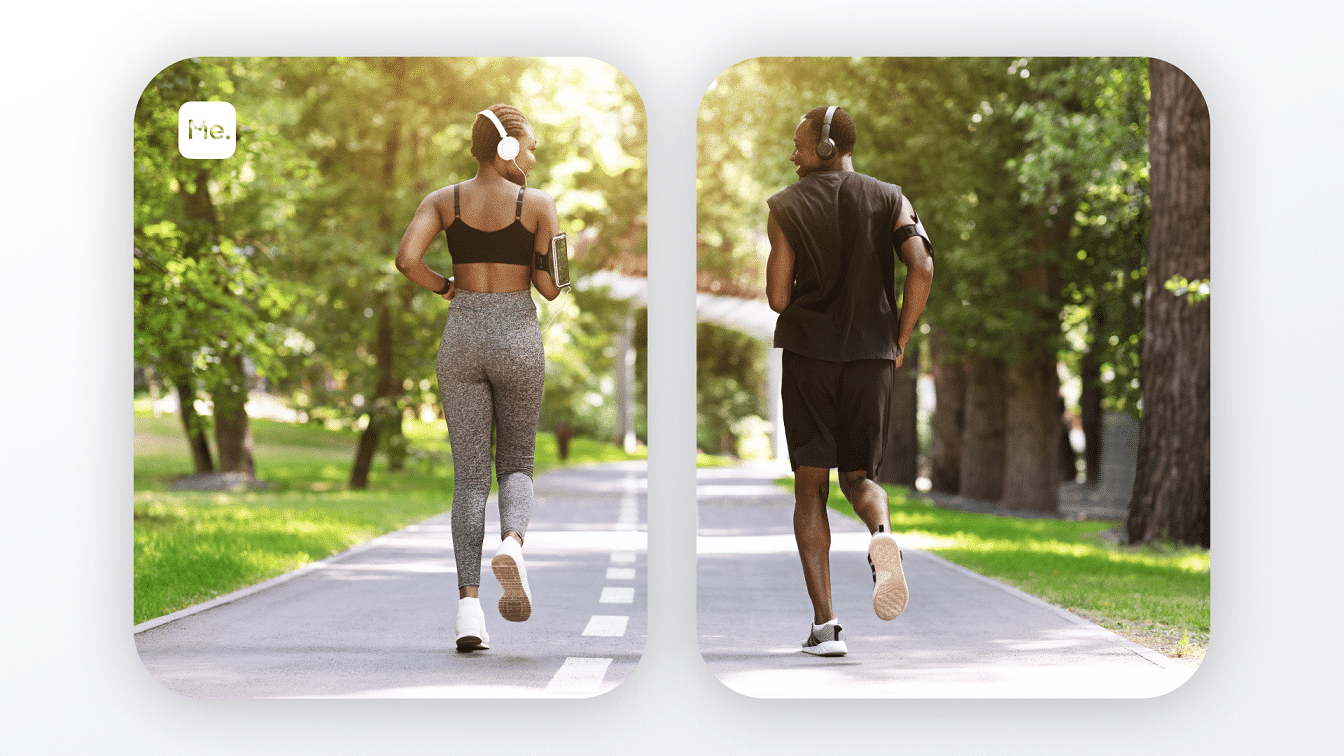Many people ask themselves, “How long does it take to walk a marathon?”. The truth is, the answer to this question is not as straightforward as it may seem. It varies depending on many factors, including gender, age, and fitness level.
In this article, we will explore these variables to provide you with an accurate estimation of how long it would take for someone to walk from the start line to the finish line. We’ll also explain how you can train for a marathon if walking is your preferred method of running.
Should You Walk A Marathon?
Before deciding whether or not you should walk a marathon, you must consider the amount of training and endurance required. This differs from person to person. However, if you can comfortably run a 5K (3.1 miles) in less than 40 minutes and 10K (6.2 miles) in less than 75 minutes without much trouble, then you may be able to make your way through a full 42-kilometer (26-mile) marathon without too much physical strain on the body.
That being said, it’s not just about physical strain. Many mental factors must be considered as well such as the ability to stay positive and focused throughout such an arduous event. You’ll also need to train consistently if you want to avoid potentially dangerous side effects like shin splints, blisters, and dehydration (just to name a few) (5).
Ultimately, the decision is entirely up to you. You must ask yourself all of these questions before signing up for the marathon rather than after it has already begun.
How Long Does It Take To Walk A Marathon?
While many factors determine just how long it takes to walk a 26-mile marathon course. Most people can expect to do so in roughly six (6) to eight (8) hours if they have been consistent with their training and have a good level of fitness. This doesn’t take into account inherent differences in gender, age, or fitness level. There will be some variance amongst these three (3) factors, which we’ll get into shortly.
Read More: Athlete Workout Plan: How To Train Like A Pro
Gender
The first obvious difference between men and women is their respective physiological makeup. Men generally have more lean muscle mass than women (about 40 percent more). This results in greater leg power and cardiovascular efficiency; this is why men can finish marathons much quicker than women (3).
However, despite all of this extra muscle mass, male athletes tend to fatigue later than female athletes do for another reason entirely: testosterone levels. Testosterone contributes not only to lean muscle mass but also endurance during activities like marathons. Men have up to ten (10) times higher levels of testosterone than women, which provides them with an extra boost in endurance that is not found in the female body (1).
To summarize, men are typically able to walk a marathon much more quickly because they are both physiologically and hormonally superior. As for women, their endurance depends on mental fortitude as well as physical fitness level.
Age
How long it takes to walk a marathon can also vary depending on the age of the athlete. According to recent research conducted, it is far more difficult for people in their late 30s or older to complete marathons than it is for people who are younger (2).
While there are no concrete reasons as to why this phenomenon occurs, one theory suggests that aging athletes have slower heart rates and, thus, aren’t able to achieve the same speeds as their younger counterparts. This means that they also tire out more quickly because they have fewer opportunities to recover from activity (2).
With that being said, fitness level matters more than age. So while most experts agree that older runners will generally take longer to complete marathon courses, some athletes can finish the race at the same time as their younger counterparts.
Fitness Level
Mental fortitude plays a significant role in how long it takes to walk a marathon regardless of gender; only those who are determined enough will make it to the finish line no matter what obstacles may be placed along the way.
However, there must also be some sort of physical shape to accompany this mental endurance. No matter how determined you are, your body will eventually begin to fade without the proper training. This is where fitness level comes into play. You must consider your current level of physical fitness before making your decision to walk a marathon (5).
If you’ve never jogged in your life but decide that walking 26 miles sounds like fun, chances are you won’t make it very far at all! You must prepare your body for such an arduous workout if you want to avoid any injuries or strains on the muscles and joints. Walking regularly can help improve cardiovascular health and stamina, which will better equip you for completing long-distance marathons like these.
Training & Preparation
The amount of training an athlete has done before a marathon will also determine how long it takes them to complete the course. Some people are naturally more fit than others due to heredity or their chosen lifestyles. These individuals may be able to walk with relative ease despite having little experience in marathons or physical fitness.
Even athletes must train before attempting a marathon if they want to have any chance of completing it within six (6) to eight (8) hours. The average person needs at least 12 weeks of focused training to successfully prepare themselves for a 26-mile marathon course.
Whether you’re a workout beast or just a beginner making your first foray into the world of fitness and dieting – BetterMe has a lot to offer to both newbies and experts! Install the app and experience the versatility first-hand!
How Can You Train To Walk A Marathon?
If you’ve already been walking regularly for a while— great! Keep it up1 If not, then you’ll want to begin training at least several weeks before the marathon so that your muscles have time to get used to the physical strain that will be required of them.
As with any kind of exercise, consistency is the key to success when it comes to training for a marathon. You should aim to walk at least three (3) times a week for about 20 minutes per session. Gradually increase the length of these walks until you’re able to complete 40-minute workouts five (5) to six (6) times per week.
Remember to not only do strength training exercises but also complete cardiovascular exercises like running and swimming to improve your stamina and endurance levels (9). This means that you needn’t entirely avoid other physical activities during your training time; however, you should make walking your primary form of physical exercise until you can complete 40-minute workouts five (5) to six (6) times per week.
After about four (4) months of training, you should be ready for the marathon itself. This will obviously vary from person to person based on age or gender; however, one thing is certain: anyone who has prepared properly shouldn’t experience any problems completing the marathon course.
How To Avoid Overtraining?
This is an extremely important consideration that many marathoners tend to forget when preparing for their upcoming course. It’s easy to get caught up in your training and inadvertently push yourself too hard.
Overtraining can have negative consequences, such as (6):
- Muscle and joint soreness
- Chronic pain
- Fatigue
- Irritability
- Vulnerability to infection (as your body suffers from the accumulated stress on some of its internal systems)
As such, it’s best to ease yourself into marathon training rather than start full-on. It’s also important that you leave several days between workouts; this will give your muscles and joints time to recover and help prevent injuries and strains (5).
You should still be able to maintain a consistent fitness level during your first few months of training, but don’t push yourself too hard or extend your workout sessions beyond 40 minutes to avoid overtraining.
Conversely, if you find yourself losing interest in walking after about three (3) months of regular exercise, then perhaps you’re pushing yourself just a bit too hard. Pace yourself. Don’t be afraid to take a day off every now and then if you feel like your body’s really exhausted or sore after working out.
Which Gear Do You Need To Walk A Marathon?
Once you’ve set your goal and created time for training, there are a few items you need:
Proper Walking Shoes
The proper footwear is absolutely essential if you want to carry out this exercise without getting injured. Badly fitted shoes will throw off your balance, increase the pain associated with every step and eventually lead to a serious injury (7).
Walking shoes have hard soles that can absorb shock well without being too stiff or unstable. It’s important not to substitute these for other types of gym shoes since their soles aren’t sturdy enough for marathons.
Appropriate Attire
The right clothes can help you stay comfortable throughout your workout. It is important not to wear any clothing that might interfere with your movement because this will frustrate your efforts.
When walking a marathon, certain items are essential: several layers of loose-fitting yet breathable clothing, a watch, a hat, and sunscreen. Accomplished runners may want to consider wearing compression shorts, wearing socks that wick away moisture, or even special shoes designed for marathons.
Read More: Triathlon For Beginners: A Guide To Entering Your First Triathlon Event
Hydration Pack
You will also need to carry a hydration pack with you as you walk the marathon. Be sure to wear it on your back, not your chest; otherwise, you’ll make it more difficult for yourself since this is such a long distance.
Carrying water in your side pocket is uncomfortable and inefficient as well as unsanitary. Most runners avoid this problem by using a hydration belt that they can put around their waist instead of just wearing the bladder itself on their backs. This way, too, they have their hands free to use a phone or other device if necessary at any time during the race.
It’s recommended that you consume at least five (5) glasses of water two (2) hours before your training time. Also drinking about a half-gallon of water during the session is highly encouraged to avoid dehydration and maintain energy levels (4).
Snacks For Energy
In addition to keeping yourself hydrated, it’s also a good idea to have access to some energy bars or other types of healthy snacks throughout your training and marathon walk. They’ll help you maintain mental focus and keep blood sugar levels steady so that you don’t tire out too early in the day.
Choosing the right snacks to fuel your walks requires some research and trial and error. If you’re eating something that isn’t digestible, then it will just sit in your stomach and rot. Energy bars are helpful because they have a long shelf life, come in many different varieties, and even have vitamins added to them to give you an extra boost of energy during the marathon walk.
Unless you’ve eaten right before training, your blood sugar will likely drop as a result of the physical exertion required by walking a marathon distance. You can address this problem by drinking about half a cup of juice or a sports drink every 15 minutes for optimal energy levels throughout the entire session. Remember that nutrition is one of the most important aspects of walking a marathon, so make sure that you plan ahead.
Proper Walking Form
When you’re walking a marathon, it’s important to focus on your form. Keep your back straight and your eyes focused forward, so that you don’t develop a slouch. This will help keep the pressure off of your joints and avoid any problems with pain or discomfort as a result of poor posture (8).
It’s also wise to maintain a fast pace since this is one of the most efficient ways to burn calories during a workout session. Even if you walk at three (3) miles per hour instead of four (4) or five (5), you’ll still end up exercising for an hour rather than 90 minutes by going faster throughout the full course of time required for training.
In addition to maintaining proper posture and speed, it’s also crucial you breathe correctly as well as lift your knees and not your heels when walking (8). Don’t start this marathon training session if you’re feeling run-down or out of energy, since this will only slow you down and make it harder to get through the entire distance than expected.
It’s also important that you listen to directions from a trusted source such as a doctor or personal trainer to get proper feedback on whether or not your current form is good enough for this exercise. For example, some people find that side steps are more comfortable than back steps for long distances, so having input from an expert can help ensure success during each training session going forward.
If you wish to free yourself from all the extra pounds that have been weighting you down for way too long, start using the BetterMe app and overhaul your entire life!
Resilience For All Weather Conditions
You might be planning your first training run by now, but if you’re thinking of running a marathon, then you need to prepare for all types of weather. Train in the heat, cold, rain, and wind; you will be walking for hours on end at some point!
Your body must be accustomed to the feel of each type of weather rather than hunkering down in an environment that’s comfortable. It’s best to train outside if possible, but if you can’t do this, then wearing appropriate clothing inside during training can help make up for it.
On race day, be sure that you know what the forecast is and can plan accordingly, so you don’t get caught outside in the rain or snow without the proper clothing to protect yourself. It’s also good to have an alternate set of clothes with you in case something happens and they become soaked during the marathon session.
Experienced Walking Partner
If you’re attempting to walk a marathon, then having a partner for motivation and support can make all the difference. Having an experienced walking buddy is ideal but if you don’t have one available, then consider joining a group in your local area that’s geared toward helping people reach their goals.
The best thing about training with a partner is that it becomes less of a chore when getting out there each day and more of an enjoyable experience, especially if you plan on spending time together over food or beverages after the end of the workout. It might take some gumption to start this type of fitness program, but once you begin enjoying the benefits, others will likely want to join in as well.
Right Mindset
If you’re planning to walk a marathon, then you must have the right mindset in addition to all of the other components mentioned above. It takes dedication and motivation to get through this type of fitness program, so if you don’t believe in what you are doing, then it’s likely you won’t see much success over time.
Think about why walking is important for your health; that will help keep your mind on track with achieving short-term goals while also losing weight over an extended period.
The Bottom Line
If you’re trying to lose weight or get in better shape, walking a marathon is an excellent way to reach your goals. Typically, it takes six (6) to eight (8) hours to walk a marathon, and with enough training over a few months, you can reach the finish line on race day.
DISCLAIMER:
This article is intended for general informational purposes only and does not address individual circumstances. It is not a substitute for professional advice or help and should not be relied on to make decisions of any kind. Any action you take upon the information presented in this article is strictly at your own risk and responsibility!
DISCLAIMER:
This article is intended for general informational purposes only and does not serve to address individual circumstances. It is not a substitute for professional advice or help and should not be relied on for making any kind of decision-making. Any action taken as a direct or indirect result of the information in this article is entirely at your own risk and is your sole responsibility.
BetterMe, its content staff, and its medical advisors accept no responsibility for inaccuracies, errors, misstatements, inconsistencies, or omissions and specifically disclaim any liability, loss or risk, personal, professional or otherwise, which may be incurred as a consequence, directly or indirectly, of the use and/or application of any content.
You should always seek the advice of your physician or other qualified health provider with any questions you may have regarding a medical condition or your specific situation. Never disregard professional medical advice or delay seeking it because of BetterMe content. If you suspect or think you may have a medical emergency, call your doctor.
SOURCES:
- Circulating Testosterone as the Hormonal Basis of Sex Differences in Athletic Perfomance (2018, nih.gov)
- Do older athletes reach limits in their performance during marathon running? (2011, pubmed.gov)
- Gender differences in marathon pacing and performance prediction (2016, iospress.com)
- Healthy Hydration (2009, acefitness.org)
- How to Train for a Marathon (2014, ahajournals.com)
- Physiological and Psychological Effects of Treadmill Overtraining Implementation (2021, nih.gov)
- Running shoes and running injuries: mythbusting and a proposal for two new paradigms: ‘preferred movement path’ and ‘comfort filter’ (n.d., bmj.com)
- Running Techniques is an Important Component of Running Economy and Performance (2017, nih.gov)
- The Effects of Concurrent Strength and Endurance Training on Physical Fitness and Athletic Performance in Youth: A Systematic Review and Meta-Analysis (2018, frontiersin.org)


















